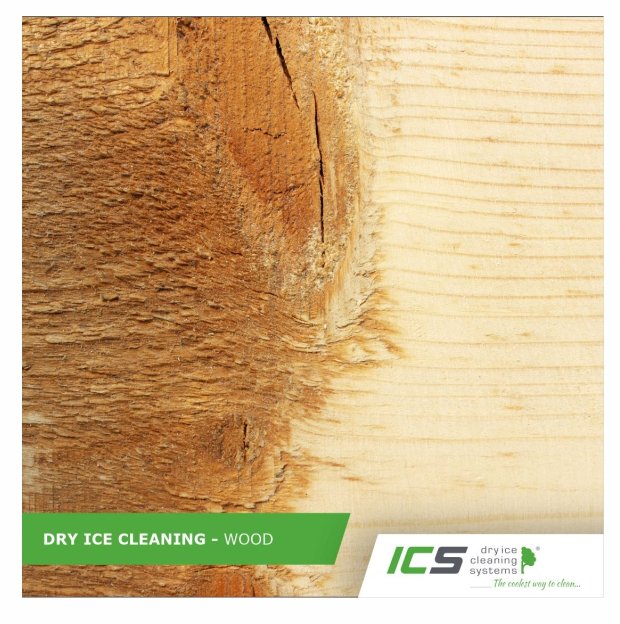 Made in Slovakia
Made in Slovakia ISO 9001
ISO 9001 Made in Slovakia
Made in Slovakia ISO 9001
ISO 9001There has recently been a growing interest in keeping the old wooden beams, staircases, railings, parquet floors and furniture in buildings. The problem, however, is their renovation - removing dust, dirt or smoke in such a way that they are not damaged. Some people choose to repaint the wood in a lighter colour, but there is a risk here that the original wood grain will no longer be visible or that the paint will start to peel off over time.
Dry ice blasting is the deepest type of dry cleaning available. This new eco-friendly technology uses dry ice to safely remove surface contaminants. Wooden furniture, staircases, beams, shutters, floors and antiques can easily be refurbished using dry ice blasting technology. Thanks to its temperature (-79°C), the elimination of viruses, mould and unwanted odours (e.g. after a fire) is also guaranteed.

"Use of dry ice cleaning technology is undemanding and extremely environmentally friendly."

When sandblasting is not possible
Sandblasting is not an option in this case, as this concerns a lengthy grinding process and the sand particles get into all of the cracks and are difficult to get rid of afterwards. Moreover, sandblasting is abrasive, changes the surface of the wood, and easily damages the wood grain and integrity of the wood. It is not usually possible to completely remove all of the dirt due to poor access. During the process, technicians are exposed to chemicals and ultra-fine dust particles which saturate the air in confined spaces. A more suitable alternative is therefore dry ice blasting - a non-abrasive technology which simply removes contaminants by freezing them. It is a versatile, gentle process which does not create any secondary waste.
Dry ice cleaning is also used with great success during renovation of many historic buildings, and it is easy to understand why. It is the cleanest and most cost-effective method of restoration available, saving time, resources and money. Unlike abrasive or chemical cleaning methods, dry ice cleaning does not etch or corrode, produce any hazardous fumes, scratch, stain or damage the surface being cleaned. Instead, it only removes contaminants - paint, mould, grease, varnish, soot and grime, and reveals and restores historical materials to their original beauty and detail.
Advantages of dry ice cleaning of wooden surfaces:
Dry ice is aggressive enough to remove years of soiling, but gentle enough to preserve even the most intricate of carvings.
Dry ice blasting is one of the best ways to restore wood surfaces damaged by fire or smoke.